You are using an out of date browser. It may not display this or other websites correctly.
You should upgrade or use an alternative browser.
You should upgrade or use an alternative browser.
Let The Eagle Scream Version 2: Star-Spangled-Boogaloo
- Thread starter Murica1776
- Start date
- Status
- Not open for further replies.
Threadmarks
View all 88 threadmarks
Reader mode
Reader mode
Recent threadmarks
From Camelot to Chaos: The Kennedy Years "He's A Damn Demagogue:" The One-Term Presidency of Thomas Sowell The Dragon Rises The World in 1980 The Country's Not Alright: The One-Term Presidency of Richard Brown Culture War: The New Jihad/Tenth Crusade The Great Melting Pot: Race Relations, Intermarriage and the Rise of "American Race Theory" "A New Eurasia"
The Technology of War
The Technology of War
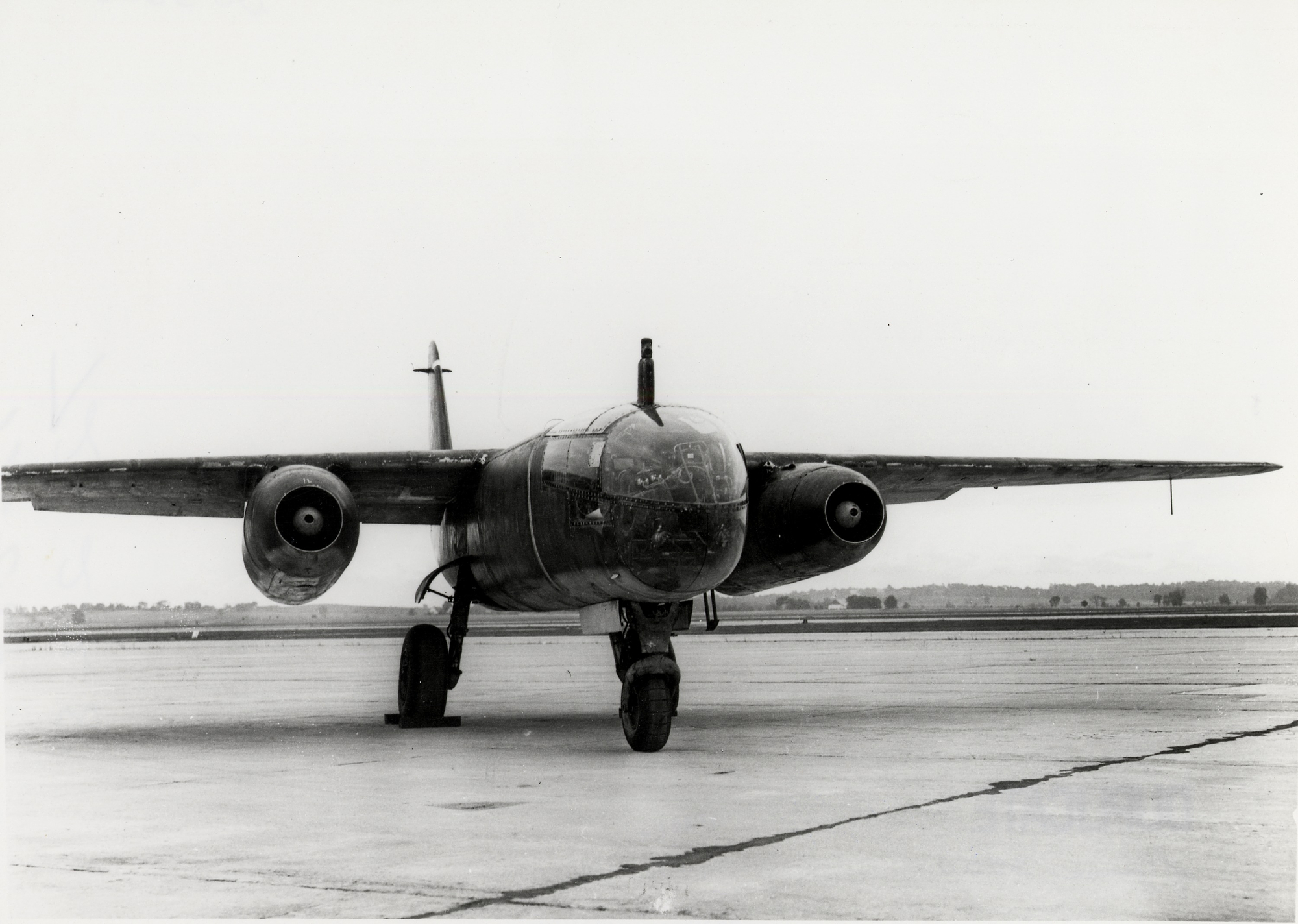
The German Brü 329, the world's first jet bomber (1943)
World War Two, more than any previous war, was a war of technology and science. All the powers who could afford it gave unprecedented resources to scientists, engineers, industrialists, and doctors. This would set the stage for decades of future technological advancements, and the technology race that was started during this era arguably never ended. Advancement would come at breakneck speeds in fields as disparate as biology, pharmaceuticals, aviation, communication, and naval technology. There were even new fields like computer science, rocketry, and nuclear physics that were born. Arguably, the war accelerated technological advancement more than any other preceding event.
The German Brü 329, the world's first jet bomber (1943)
Germany, Europe's most powerful state, led the way in the fields of rocketry, aviation, and the creation of new conventional weapons of all stripes. German engineers had been casually experimenting with propelled rockets as early as 1916 thanks to the First World War, but now with decades of halting research providing a baseline and huge amounts of cash ready to go, Germany's brightest young engineers helped push rocketry in warfare from impractical fiction into practical fact. No one was more useful for this than Werhner von Braun, a young member of the Junker class who was renowned for his work in the field. With broad knowledge, excellent managerial skills, a brilliant team, and huge grants, von Braun began developing the weapons that would make life in Britain hellish by 1943. In February of 1940 the first cruise missile, known as the Kaiser-1 (K-1) or the "doodlebug," was proven to be a successful weapon. Approximately 5,000 would be deployed to the frontlines with France and Belgium, and while only about 25% hit their targets, they adversely impacted the morale of increasingly worn out French troops and Belgian civilians, and showed the utility of such a weapon. The K-2 would come by the end of the year, and was essentially a somewhat more powerful version of the K-1. However, at the start of 1941, Von Braun had a stroke of brilliance. The way to increase accuracy, he realized, would be to use radio technology and the new technology of radar. Working alongside radio and radar technicians, Von Braun jerry-rigged a primitive command guidance system to the K-2, dubbed it the K-3, and began testing it in combat against France and Occupied Norway. The results were outstanding: accuracy went up from approximately 25% to 53%. Not exactly perfect, but still a revolution. The ultimate symbol of this effort would be the next and final wartime model, the K-4 missile. Using innovative turbojet technology alongside a more refined command guidance system, the K-4 was a coup. With its greater operational range of 250 miles (as opposed to the K-1's 160) the K-4 could be fired from much farther away, keeping the launch sites further away from enemy air units. Although only 2,756 K-4's would be produced before war's end, they were by far the most accurate and most powerful cruise missile around, and would provide a launching point for future German rocket development.
In the field of aviation the Germans quickly aped their Tripartite allies by focusing on speedy bombers and fighters. Thanks to the nation's wealth, they outstripped the Tripartite by 1940, although they would remain a serious force in the industry. In early 1939, Brückner Aeroworks released the Brü 129, essentially a slightly lighter clone of the Hapsburg 109. In April of 1940, the faster and better armed Brü 229 was rolled out, and approximately 19,768 units were built. It would be the workhorse bomber of the Luftwaffe for two years, but the gradual improvement of French and British interception tactics and fighter planes necessitated a major improvement. The same jet engine technology that was being used in the K missile series was implemented into the development of both bombers and fighters (who had been keeping up with bomber development). The end result of these developments were two planes, built in 1942: the Brü 329 bomber and the Brü 355 fighter. The first jet powered planes ever built, they were absolute game changers for the Luftwaffe. It didn't matter how well armed or armored the British and French planes were, these planes could easily evade them or outmaneuver and kill them. The Luftwaffe took out contracts for 26,000 of each, of which 9,298 of each were built by war's end. Aside from these splashy developments in technology, the Germans drastically improved conventional weapons technology, most prominently by creating the MP 41, the first mass produced assault rifle, which was rolled out in 1941 and became standard issue kit by 1942. By the end of the war, Germany had built one of the most powerful and advanced militaries in the world.
Although the Tripartite would clone many developments from the Germans, they weren't slouches themselves. It was particularly in medicine that the Tripartite Empire shined. Aside from pioneering the creation of modern blood banks and transfusions, and successfully developed the first method for separating blood plasma in 1939, helping many patients who might have needed plasma as opposed to blood. The Tripartite also developed a mass inoculation scheme for their troops to prevent disease outbreaks from slowing down or weakening their armies. One unexpected fruit of this endeavor was an oral polio vaccine in 1944, the first of its kind in the world, and a huge breakthrough in the medical community. The Austrian medical establishment, long staffed with Jews, was so successful that Extraordinary Minister Richter declared the Jewish community "Honorary Catholics and Friends of European Civilization," and over 80 people were hanged for anti-Semitic crimes during the war. Nonetheless, many would later leave, but that's for a different chapter. Another major medical breakthrough delivered courtesy of the Tripartite Empire was the development of primitive anti-viral drugs in 1943, mainly developed to counter an outbreak of sexually transmitted herpes among the troops. One non-medical development pioneered by the Tripartite Empire would be the world's first single-shot grenade launcher, the AT-68, developed to give counter-insurgents an edge against Serbian and Romanian insurgents.

Brü 355 fighters prepare to launch an assault on the RAF (1944)

The K-4 Cruise Missile (1944)
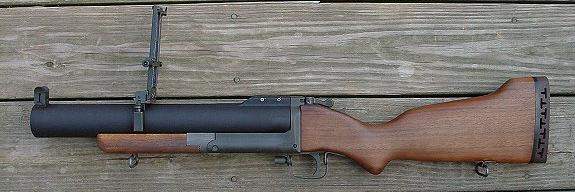
The AT-68 grenade launcher
France made very little in the way of technological advancements, for the simple reason that the bulk of their resources were being spent just maintaining the war effort against Germany, Liberia, and America (the Croixist High Command privately acknowledged that things had gotten out of hand). However, there were some notable enhancements by the French, including the use of primitive piston-engine powered spy planes in French North Africa, and specialized APC's designed for either desert or forested areas, enhancing on the generalized nature of existing technology. There were also some minor, but still notable improvements on French tank technology that were implemented before the Fall of France in '43. However, France's failure to keep up in the technology race was a sign of things to come, and even arguably heralded the end of France as a world power.
Japan, like France, had bitten off more than it could chew economically speaking. However, Japan also made some notable advancements in the creation of dive bombers, biological and chemical warfare, and some notable improvements in the creation of phosphorus bombs and primitive napalm. The Japanese developed surprisingly powerful dive bombers to counter America's ever-increasing naval power in the Pacific, to little avail. However, these improvements would be seized by the Americans after the war, especially the theoretical plans surrounding jet-powered dive bombers. Japan also made strides in biological and chemical warfare, testing various weaponized diseases and poison gases against innocent Chinese in Units 731 and 831, horrible camps were civilians were rounded up explicitly to be used as fodder for medical experimentation. Although the Americans would take their notes on the usefulness of weaponized influenza after the war, every doctor the Americans captured in relation to the camps (several fled to Russia) would be executed after the war for their crimes against humanity. Finally, Japan developed more advanced white phosphorus bombs and invented what we now know as napalm to combat German and nationalist guerillas in the jungles of Indochina. The Americans would follow suit and roughly keep pace.

A British Camelot Machine (1944)

A Japanese phosphorus bomb explodes over an American bomber (1943)
The United States was also a technological powerhouse, leading the way in computer technology, nuclear physics, and long range bomber technology. In the computer sphere, the US and Britain were engaged in an arms race over encryption technology, with the British devising ever-more complex "Camelot Machines," which were essentially primitive computers designed to encrypt British communication. The United States, at the secretive Patriot Compound outside of Lexington, Massachusetts, built increasingly powerful and intelligent computers that could intercept and decrypt the messages coming from London. Notably, African-American mathematician Harold Clyburn built the Goliath Machine in 1940, a truly huge computer that wasn't just able to decrypt British communications, but could also solve complex mathematical formulas. The Goliath Machine was soon used by the government not just to decrypt the Camelot messages, but also to calculate long-range bombing plans. In this way, budding American computer technology began boosting technological advancement in other fields. Using the Goliath Machine, Valdez Aviation Industries began charting theoretical long-range bombing runs from the East Coast to London, or from the Pacific Territories to Tokyo. After several years of designs, test flights, and number crunching courtesy of Goliath, the program bore fruit in 1943. The V-54 Peacemaker long range bomber, powered by a combination of piston engines and some jet engines that were less refined than their German counterparts, the V-54 was a marvel of aviation. It had the longest wingspan of any combat aircraft ever, clocking in at 230ft. It could carry 87,200 lbs of ordinance and had a range of 10,000 miles. It could fly to Britain, bomb the British, and fly home, shredding fighters with its six remote-controlled turrets. The V-54 would terrorize enemy air forces, pound cities, and would eventually carry the war-ending ordinance created by the Seattle Project.
The Seattle Project, named in honor of the city first victimized by the Canadians, was devoted to using the principles of atomic fission to create a world-ending superweapon. The US government devoted some $3.5 billion to the production of the world's first atomic bomb, equivalent to almost $53 billion in 2021. The project would hire over 160,000 people, and a de facto secret city was established in the deserts in the Territory of New Canaan. The project, headed by German Jewish physicist Martin Einstein (no relation to Albert), Ezekiel Wilkinson, African-American physicist William Carver, and Alejandro Cortez, worked round the clock refining uranium and constructing a bomb. It took them 3 years, from 1940-1943, to produce a working atomic bomb. The test bomb, dubbed the Big Boy, was detonated on December 1st, 1943 in front of the lead scientists, the Joint Chiefs, and the President and First Lady. Upon the detonation of the Big Boy, Ezekiel Wilkinson, an Alabama born Southern Baptist, quoted Genesis 19:24-29.
Then the Lord rained upon Sodom and upon Gomorrah brimstone and fire from the Lord out of heaven; and he overthrew those cities, and all the plain, and all the inhabitants of the cities, and that which grew upon the ground. But Lot's wife looked back from behind him, and she became a pillar of salt. And Abraham gat up early in the morning to the place where he stood before the Lord: And he looked toward Sodom and Gomorrah, and toward all the land of the plain, and beheld, and, lo, the smoke of the country went up as the smoke of a furnace. And it came to pass, when God destroyed the cities of the plain, that God remembered Abraham, and sent Lot out of the midst of the overthrow, when he overthrew the cities in the which Lot dwelt.

The V-54 Peacemaker (1943)
/https://public-media.si-cdn.com/filer/3e/9f/3e9ffe63-7b14-4461-a003-71904cc95cd3/2-elinor-copy.jpg)
Nurses at a Liberian research hospital (1942)

Washington's Fist explodes over Newcastle (May 8th, 1944)
Last edited:
Here's another PoD to start your TL instead of having Johnson impeached and removed from office: April 14th, 1865.
Instead of losing his nerve and getting very drunk, George Atzerodt shoots and stabs Vice-President Andrew Johnson to death. A messenger finds the body when he comes to Johnson's room to notify him of Lincoln's being shot.
Benjamin Wade becomes the president, but declines to run in the November 1865 special election (mandated under the 1792 presidential succession act), and, so, Colfax and Washburn run and become president and vice-president, like in the TL, and the TL goes from there...
Instead of losing his nerve and getting very drunk, George Atzerodt shoots and stabs Vice-President Andrew Johnson to death. A messenger finds the body when he comes to Johnson's room to notify him of Lincoln's being shot.
Benjamin Wade becomes the president, but declines to run in the November 1865 special election (mandated under the 1792 presidential succession act), and, so, Colfax and Washburn run and become president and vice-president, like in the TL, and the TL goes from there...
Did the Germans work on Surface to Air, Air to Air or Air to Ground Missiles? Did the various alliances share blueprints or prototypes with each other?
Nice chapter. Will we another chapter on USSR during the war?
You'll be hearing from the USSR after the war. There are some shenanigans waiting to be pulled, and some other things I don't think anyone quite predicts.
Did the Germans work on Surface to Air, Air to Air or Air to Ground Missiles? Did the various alliances share blueprints or prototypes with each other?
The Germans have probably done some work on surface to air, but air to air and air to ground will come a little later. And honestly, aside from the Germans and Americans sharing a few pieces of aviation technology, not really. One thing that's different about the relationship between America and their sphere with Germany and their sphere as opposed to the French-UK-US alliance of OTL is that it's much more transactional and less friendly.
Last edited:
A Churchill that helps save the Irish is welcome, especially given another infamous version of Churchill (the Madness! Churchill)…
On a side note, an American Adenauer timeline would be interesting, too (his parents move to America before he is born)...
As well as the one from the first version of TTL, where Evil!Turing built a computer that could calculate the most efficient way of committing genocide but couldn't play Solitaire.
The Tide Turns
The Tide Turns
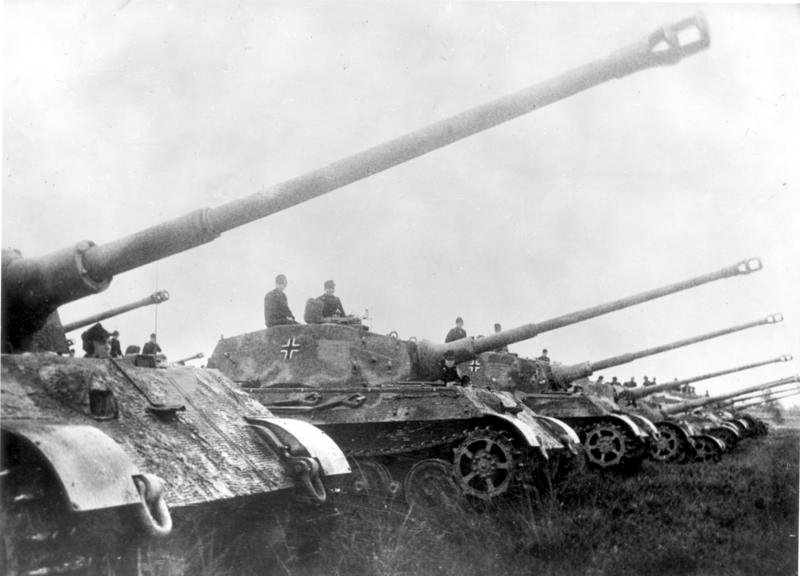
German tanks advance into Belgium (April, 1941)
Germany and her allies had been caught utterly flat-footed by the GIA's aggression. That was about the biggest advantage the Allies had in the entire war. As time dragged on, the economically powerful Germans truly mobilized their war machine, to say nothing of America's swift annexation of Canada. By the middle of 1940, it was becoming clear the Central Powers were picking up steam. It was only a matter of time before the Allies were forced to retreat. In Europe, the Alliance started crumbling by the end of 1940.
German tanks advance into Belgium (April, 1941)
The beginning of the end for the Allies in Europe was found on the Balkan front. Although the Serbs fought hard, the firebombing of Belgrade, followed shortly by the firebombing of Nis, had kneecapped the nation's industrial base. The Serbians could not sustain a meaningful resistance against a well-organized enemy in this condition. On November 23rd, 1940, what was left of the Serbian government unconditionally surrendered, while the nests of lightly armored guerillas that were around the country were unprepared for so-called Granatenkommandos (Grenade Squads) where multiple men with AT-68 grenade launchers and bazookas, escorted by a few regular infantry, would find the poorly equipped guerilla nests and blow them to kingdom come. The Granatenkommandos were equipped with a variety of grenades, including conventional, white phosphorus, and mustard gas, for maximum impact. In Romania, a similar scenario played out, with much of Bucharest and Iasi being being torched by firebombings, and the Tripartite war machine ground down the Romanians by December 14th, 1940. The remainder of the month was spent with more Granatenkommandos combing the countryside for guerilla bases and blowing them to hell. Greece saw the Bulgarians kick them out of their remaining land in Macedon, was subjected to a Tripartite blockade of decent strength, and the Immolation of Larissa by Tripartite bombers, blew up into open revolt, with a Republican government seizing power and suing for peace on New Year's Eve, 1940. The resulting treaties were nothing short of a coup for Vienna. Serbia was allowed to remain technically independent, but was not allowed to have a military. Furthermore, all foreign relations were to be managed by Vienna, and the Tripartite Empire would have supervision of the courts. Romania wasn't treated quite as harshly, but still became a satellite of the Empire. Bulgaria reclaimed their lost lands in Macedon, but Athens also became a client state of Vienna, and the Greek Navy was handed over to the Tripartite Empire. Shortly afterwards, Albania would sign a treaty of friendship with the Tripartite Empire, as would an exhausted Bulgaria. The Hapsburgs were the de facto hegemons of the Balkans. What resources could be extracted from their client states were immediately fed into the Tripartite war machine.
This was bad news for the Alliance. With the closing of the Balkan Front, a triumphant Tripartite Empire began rushing over 300,000 battle hardened troops with skyrocketing morale to the front with France. At the same time, new German tanks based on massively improved technology started being rolled out en masse. The Bismarck III was a technological coup, and the Germans were cranking them out at a rate of 4,000 a month. In the beginning of 1941, a series of ruthless offensives mostly expelled the French from German soil, and in April, the Germans under the command of Herman "Blitzin Blitzen" punched into Belgium and the Netherlands. The Dutch greeted the Germans as liberators, and some 45,000 Dutchmen would join the Niederländische Freiwilligenbrigaden (Dutch Volunteer Brigades) to help the Germans pacify a restive Belgium. The Belgians, who were mostly fond of the French (at least in the south) put up much stiffer resistance. The Germans respond with unrelenting force, pummeling any hint of resistance with overwhelming firepower. Tripartite Granatenkommandos who had gotten experience in the mountains and valleys of Serbia blew up barns and suspected hidey holes across Belgium, oftentimes with high civilian casualties. Nonetheless, the Germans steamrolled the small country and entered France. Here, the Central Powers were once again slowed down. After pushing about 30 miles into France, the advance stalled in May. There would be several stops and starts over the next year, but France managed to hold on with help from an increasingly beleaguered Britain. French anti-tank guns made faster operations near impossible for the Germans.
As 1942 ground on, the French were in an increasingly desperate spot. The British were beginning to think more of self-preservation as the Americans tore through Asia and began attacking Australia, New Zealand, and Malaya after the Liberation of the Philippines and the Liberation of Hong Kong. This meant France had to rely on its limited resources to fight off the Germans. Unfortunately, this required taking military resources away from the economically vital, and increasingly precarious, African colonies. Having failed to destroy an industrialized Liberia receiving massive help from the Americans, the French Empire was finding itself besieged on all sides. On December 1st, 1942, a general order was sent from Paris with a simple message. Loot everything you can and, excepting Algeria, get the hell out of Africa to shore up the motherland by the New Year. The remaining French forces in Africa fled as best they could, being harassed by the Tripartite Navy who were only barely held off by the remnants of the French Navy. They landed in France exhausted, demoralized, and under-equipped.
In the end, it would be for naught. France's economy couldn't keep up with Germany's increasingly powerful military machine. The front lines would break again on February 2nd, 1943. They would never reform. The Germans captured Paris once again, and like the Americans in Canada, they hanged members of leadership. Unlike the Americans, they made no effort to discern who was actually involved in the invasion and who was just a bureaucrat, and they hanged quite a few more Croixists. German troops controlled the whole country by March and soon Granatenkommandos would roam the country alongside tanks and APC's fighting a counter-insurgency. Despite the ongoing counter-insurgency, the Germans were in a celebratory mood. Victory was coming.
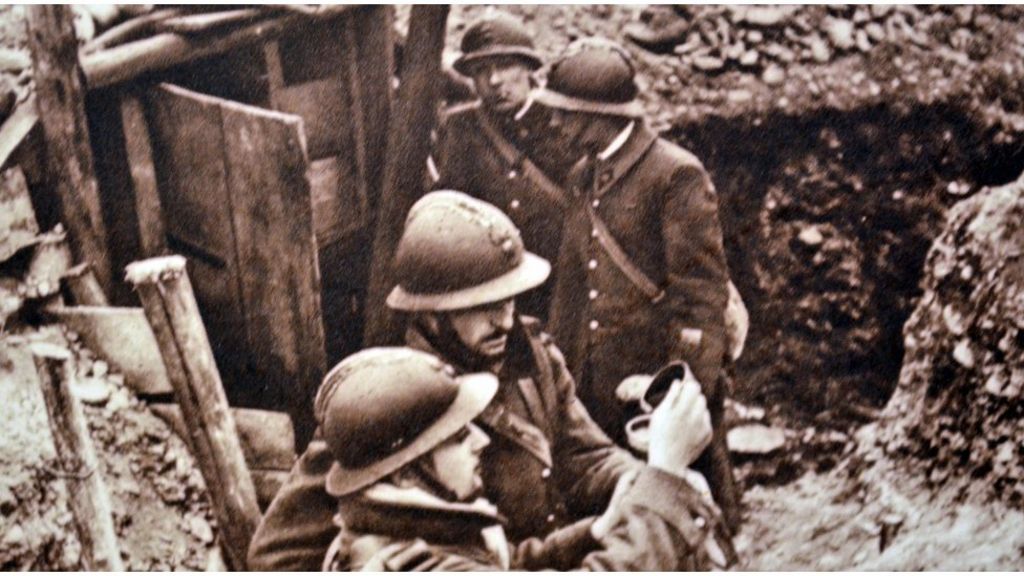
French soldiers try and hold the line (1942)

German troops parade through Paris (1943)

Granatenkommandos spring into action (1943)
Looks like the writing's on the wall for the Alliance. Wonder how Mosely's coping with this turn of events.
Indeed, I'm wondering if he'll end up the same way as Hitler did in the movie Downfall, hiding in an underground bunker with the most loyal members of his regime, going crazy and hysterically ranting and raving at them as the hated enemy overruns his nation...Looks like the writing's on the wall for the Alliance. Wonder how Mosely's coping with this turn of events.
Or maybe he'll try to flee the country like Mussolini attempted to do and end up getting captured and executed by a band of angry partisans, perhaps Irish partisans?
Seriously, once Ireland is liberated and the Erstwhile Camps become public knowledge, I don't know whether he'll remain in Britain to fight it out to the bitter end or attempt to flee to save his own skin...
One small note... Herman "Blitzin Blitzen"'s last name has been omitted.
One small note... Herman "Blitzin Blitzen"'s last name has been omitted.
Blitzen is his last name, it's a nickname that incorporates his last name as well
Thanks for the clarification!Blitzen is his last name, it's a nickname that incorporates his last name as well
With the French and possibly the British abandoning the African colonies they are going to be a mess too big for the Germans or the Americans to clean up.
A Nation of Steel
A Nation of Steel
/arc-anglerfish-arc2-prod-mco.s3.amazonaws.com/public/OZTSF5YSNVEQPC52ZI3KYK2QLY.jpg)
Liberian troops man an anti-aircraft gun outside Monrovia (1942)
When Britain and France ganged up on Liberia and her puppet in the Ivory Coast, they expected an easy fight. These tiny footholds of disgusting Yankeedom on a continent rightfully ruled by Europe and brought into line with European needs couldn't possibly pose a threat: if Africans were so strong, they wouldn't have been colonized. This was a gross miscalculation on the part of the Allies. Liberia might have been tiny, but had a booming, culturally homogeneous population and had spent some 60 years building a proper industrial base. They weren't Germany, but they definitely weren't the scattered and technologically primitive kingdoms that the Europeans had colonized a century ago./arc-anglerfish-arc2-prod-mco.s3.amazonaws.com/public/OZTSF5YSNVEQPC52ZI3KYK2QLY.jpg)
Liberian troops man an anti-aircraft gun outside Monrovia (1942)
The initial offensive was devastating thanks to the sheer numbers involved. Several hundred thousand well armed troops are a burden to dispatch for even continent spanning empires, much less a relatively minor state and her puppet. However, what they lacked in sheer numbers, they made up for in knowledge of the local terrain, coordination, innovation, and fanatical determination. Liberia was the only place in Africa where the African could breathe free. He would not break before the colonizers. While there were early gains in the Ivory Coast, with the northern half of the country falling to the French by New Year's of 1940, the advance stopped there. Crucially, the Franco-British forces failed to meaningfully penetrate Liberian territory. Decades of fortification had paid off. These delays gave Liberia time to both receive American aid, and mobilize more than any other country did during the war. In April of 1940, some 90,000 African American troops in the so-called "Liberian Legions" landed in Monrovia to cheers. American economic aid was also important to sustaining the Liberian war effort. However, the war in Liberia was not merely won by American aid. The epic efforts of the Liberian people would enter as the stuff of legends, and deeply impressed their allies in the Central Powers. Sports programs and recess for high schoolers were replaced by military drills in the event of a last ditch defense effort. Every able bodied man and woman who could be spared was put in uniform, the rest got used to working 12-14 hour shifts harvesting and processing rubber, mining minerals, sewing uniforms, and manufacturing weapons and ammunition. Their Ivory Coast puppet state joined them in this effort, and old religious and cultural reservations were cast aside as they mimicked their Liberian allies. President Richardson called Liberia "A Nation of Steel" in an address to a Liberian delegation at the White House, and the name stuck.
This unprecedented mobilization ensured that Liberia's armed forces could remain a powerful force in the face of overwhelming odds. This notably affected Allied morale. Getting whooped by white Germans or Americans is one thing, but Liberians? This tiny African nation was actually holding its own against the French and British? There was a notable decline in discipline by February of 1941 among the Allies, and in a bold May offensive by Americo-Liberian forces, Tubmanburg (OTL Bouaké) was liberated. News of this was impossible to censor and resulted in rebellions by Black subjects of France and Britain. Their assertion of supremacy had been shattered. To try and stem the bleeding in the colonies, Britain established over 25 Erstwhile Camps, and these were more geared towards execution by shooting than just hard labor. The French began trying to force mass re-education on their subjects to beat the rebellion out of them. These efforts only inflamed rebellions further, as not even Britain had the wealth to shoot or imprison half of Africa, and everyone knew it. Facing a general rebellion, the Allies withdrew from the Ivory Coast by September of '41. From there, the Liberians actually pressed the advantage. Sierra Leone was seized in November, and Monrovia declared that it would be integrated into Liberia. Liberian forces would romp through Guinea in the Spring of '42, being greeted as heroes by the natives, and would penetrate the tropical savannahs of Mali by Fall. When the French de facto quit Africa, the Liberians did everything they could to secure Mali, Mauritania, and Burkina Faso with local cooperation, as they desperately tried to deny the Germans total hegemony in Africa. The Americans and allied troops from Mexico and Argentina would aid these efforts as well, trying to give the budding Free World a powerful foothold in Africa. Liberia wouldn't advance farther, but surprisingly held this impressive goody bag.
By the time the borders were finalized in 1944, Liberia had done the unthinkable: they were now a legitimate world power. The Ivory Coast and Guinea joined Sierra Leone in being directly integrated into Liberia, albeit on a 10 year timetable. The Muslim and Catholic populations of these places were guaranteed religious freedom (although they couldn't prevent ongoing well-funded Protestant conversion efforts). There were also concessions made to local cultures, including very limited accomodations of Francophone language rights (signs and documents are ok, but ballots will be in English consarnit). Mali, Mauritania, and Burkina Faso were made into three separate republics with their OTL borders. Liberian troops would remain to ensure fair elections, and moderate Islamist parties with nationalistic tendencies and pro-Liberian streaks emerged triumphant. One dark stain on this otherwise positive development for Africa were these Mali and Mauritania's treatment of their lighter-skinned Arab minorities. Arabs had long dominated the region as Islamic conquerors, slave owners, and colonial collaborators. To say they were unpopular with the Black majority would be an understatement. Both countries enacted policies that resemble OTL Jim Crow against their Arab minorities, and over 200,000 Arabs would flee the region to join Italian Libya, which was becoming increasingly assimilationist (we'll get to Italy soon). The presence of this powerful Liberian sphere would inspire deep anxiety in Germany and her allies, spurring the creation of Martial States in Africa.

Liberian tanks storm through Mali (1943)
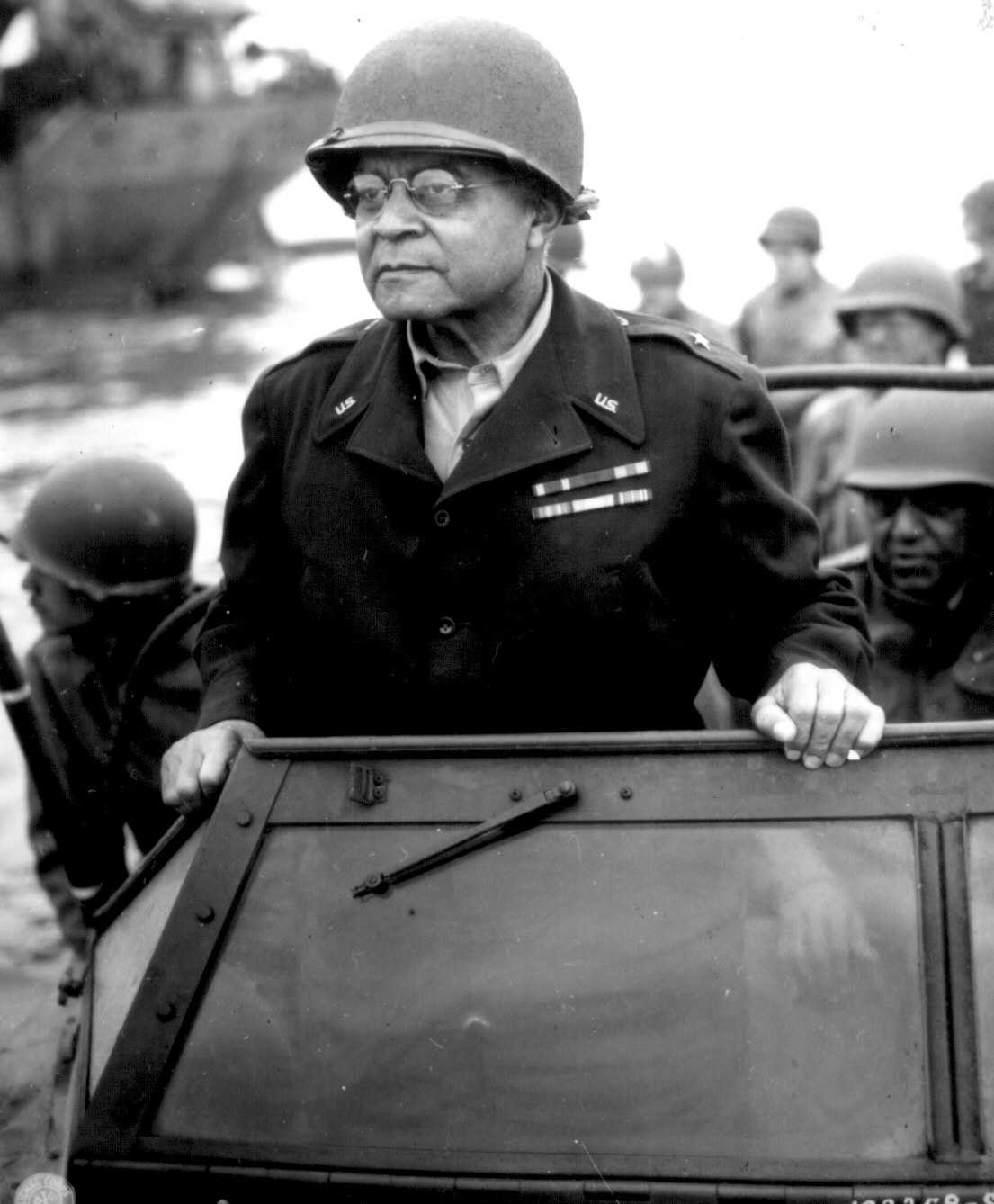
General Benjamin Octavian Davis Sr. of the Liberian Legion Force (1941)

Flag of the Republic of Mali
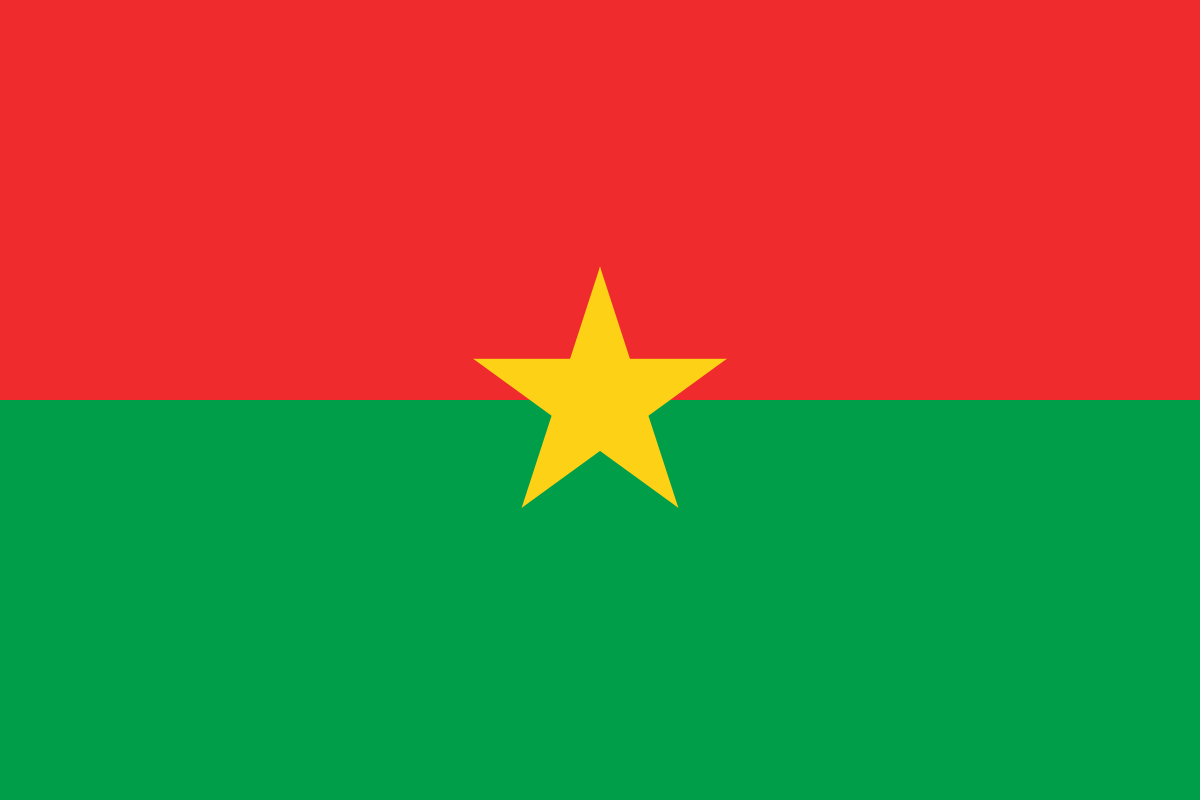
Flag of the Republic of Burkina Faso

Flag of the Republic of Mauritania
Having Liberia embrace assimilationism and receive more Black immigration is really going to boost the country. By my calculations, after this annexation spree, Liberia will legitimately have all the ingredients to be a great power. By 2020, I think the country will have around 60 million people (better healthcare and much less violence boosts the OTL numbers by a few million) combined with an established industrial base and education system, and the resources of much of West Africa.
Whats the next update. Will you hear more about the britsh restiansce or will it just be winston churchillHaving Liberia embrace assimilationism and receive more Black immigration is really going to boost the country. By my calculations, after this annexation spree, Liberia will legitimately have all the ingredients to be a great power. By 2020, I think the country will have around 60 million people (better healthcare and much less violence boosts the OTL numbers by a few million) combined with an established industrial base and education system, and the resources of much of West Africa.
I wonder how the war will affect movies and popular culture when the war ends and all the soldiers come home. Do you think the Germans will support Khomeini's rise to power in Iran ITTL?
Pop culture is something I'm still formulating. And Khomeini isn't going to be a factor in this TL.
Whats the next update. Will you hear more about the britsh restiansce or will it just be winston churchill
Next updates:
Germany's War in Africa and the Rise of The Martial States (complete with ideological justifications/evolution)
Asia (2-3 parts likely)
Crumbling of the Raj
Liberation of Ireland
Atomic Strikes and end of War
Some more resistance may or may not crop up
Threadmarks
View all 88 threadmarks
Reader mode
Reader mode
Recent threadmarks
From Camelot to Chaos: The Kennedy Years "He's A Damn Demagogue:" The One-Term Presidency of Thomas Sowell The Dragon Rises The World in 1980 The Country's Not Alright: The One-Term Presidency of Richard Brown Culture War: The New Jihad/Tenth Crusade The Great Melting Pot: Race Relations, Intermarriage and the Rise of "American Race Theory" "A New Eurasia"- Status
- Not open for further replies.
Share: